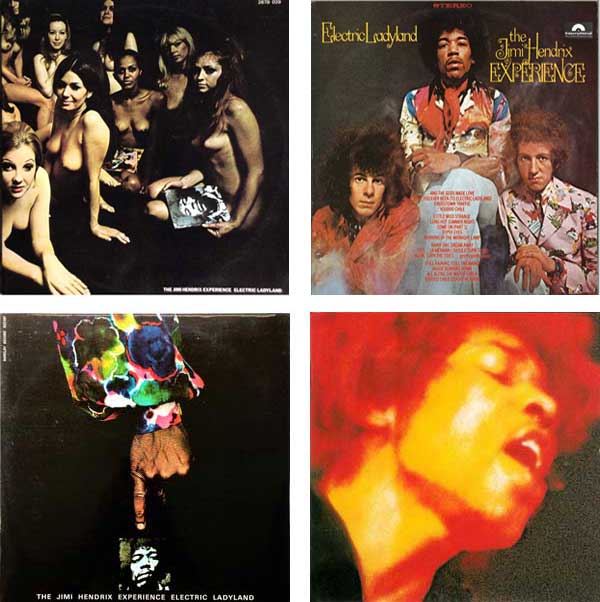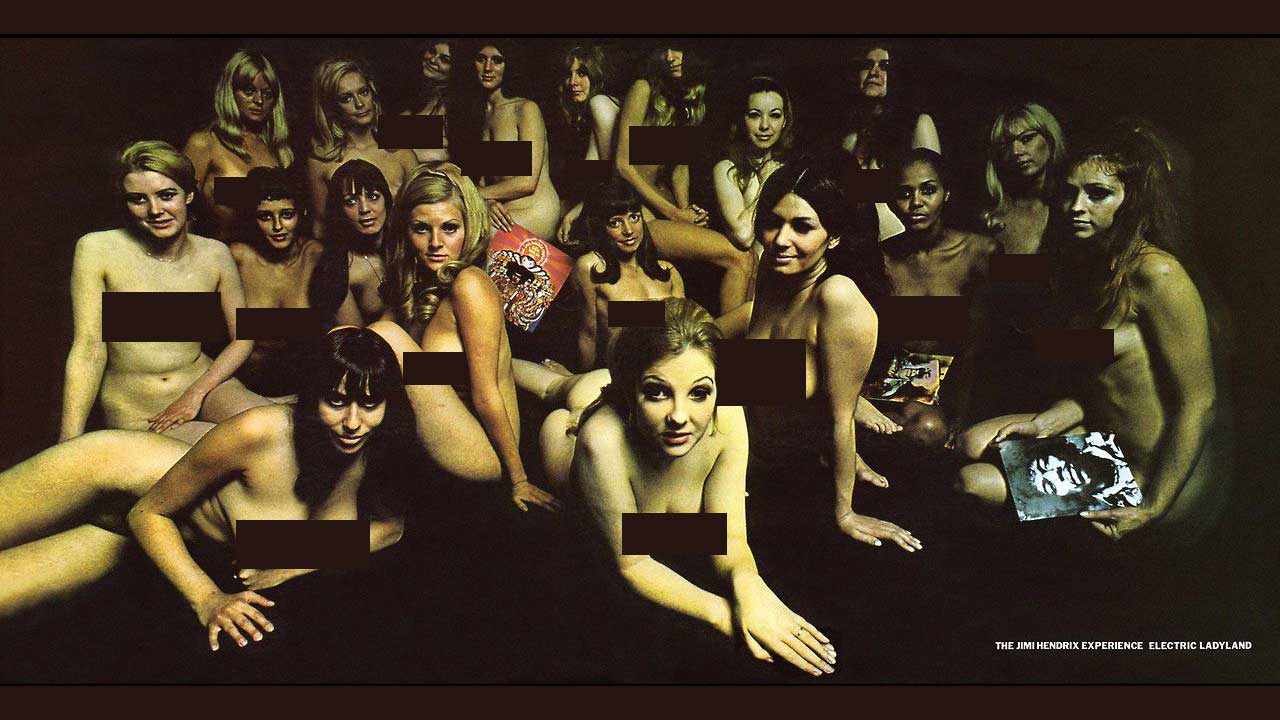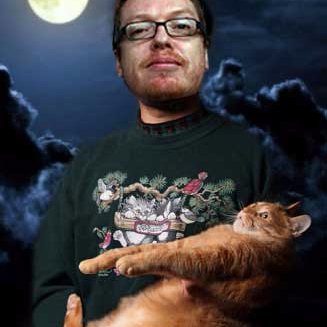Jimi Hendrix's towering psychedelic masterpiece Electric Ladyland is a bona-fide, undeniable classic. Hendrix's finest work, it's one of those albums that appears to have a permanent home in Greatest Ever Albums lists, no matter who's doing the compiling. Back in 2001 Classic Rock ranked it at #10 in a list of the 100 Greatest Rock Albums Ever, while Rolling Stone placed it at #53 in its 2020 list of 500 albums.
Perhaps uniquely for such a classic, it's an album that came packaged in several completely different sleeves, depending on the purchaser's location. In the US, Electric Ladyland came wrapped in a blurred photo of Hendrix's head, shot by Karl Ferris during a show at London's Saville Theatre in 1967. In France and in the Benelux nations, the so-called "finger cover" saw a floral-shirted arm pointing at a photo of Hendrix taken by Alain Dister.
In Germany, Spain and Australia the album was adorned by a picture of Hendrix plus his Experience bandmates Mitch Mitchell and Noel Redding, shot by David Montgomery. In South America and New Zealand there were further variations. And in the UK, Electric Ladyland arrived with another Montgomery shot, this time of 19 topless women.
Two record shops in York refused to stock the album, and Christopher Foss – secretary of the Gramophone Retailers’ Committee – told the Sunday Mirror, “This type of album sleeve is almost certain to reduce the sale of records." Foss was wrong, of course, and Electric Ladyland went on to sell 35,000 copies in The UK in its first four days.
Below, photographer Montgomery reveals how the shoot came about, and what happened on the day.

“Linda McCartney shot the original picture of Electric Ladyland in New York. She took a picture of a little white kid and a little black kid playing together. It was peace, love, harmony – all that stuff. But the record company in London looked at it and said: ‘What the hell is this? This isn’t gonna sell records.’ So that’s when I got the job.
“I’ve met a lot of people who told me they had the Electric Ladyland album but they’d never listened to it. They just liked the naked girls. I think the people from the record company arranged it all. I knew the girls were going to be topless and [UK cover art director] David King just said to me: ‘We’ll do it Thursday night’. I can remember that, that it was a Thursday night, because I was working in the daytime. So they went to all these London clubs and rounded up all these girls by saying to them: ‘We’re taking pictures of Jimi Hendrix and would you like to be in the picture with him? You’ll make five pounds.’
“On the big day, all these girls came into the studio – I think there were 19 of them – and slowly started undressing. Then I put them into some kind of grouping and took a Polaroid of it, to see what the lighting was like. David King and maybe somebody from the record company looked at it and said: ‘It doesn’t look good with their knickers on. Okay girls, can you take your knickers off?’ The girls all said no. So David offered them more money. I think, with haggling, they gave them another three pounds each. Also, for some reason Hendrix never showed up. That’s why some of them are holding albums.

“Deep down in my heart I knew that this picture could be controversial, so I kinda made sure there was nothing really showing, just their boobs. The other thing is that, in a situation like that, I was shooting on Kodachrome film, which was a transparency. Which meant that either you were right or wrong on the exposure. So I had all these girls and all these different skin tones. My normal habit would be to take four different exposures. When I got them back the colour was absolutely beautiful – all the girls’ skin tones looked like babies’ bottoms. It was really beautiful and I was very pleased with it.
“I gave David all the film and made a couple of choices and that was the end of it. But when the album came out, it was really dark and murky. So I called them up and said: ‘I know it was a low budget, but jeez!’ They said: ‘There’s nothing wrong with that picture, that’s how we wanted it. Your correct exposure was too nice and open and clean. I wanted it a bit more gritty.’ So that’s what David King did. He was the art director so he was the genius. Evidently, Jimi Hendrix didn’t like it. But I don’t actually believe that, because Jimi was quite a ladies man. He was a promiscuous character, so I couldn’t see why he was being all puritanical.”

